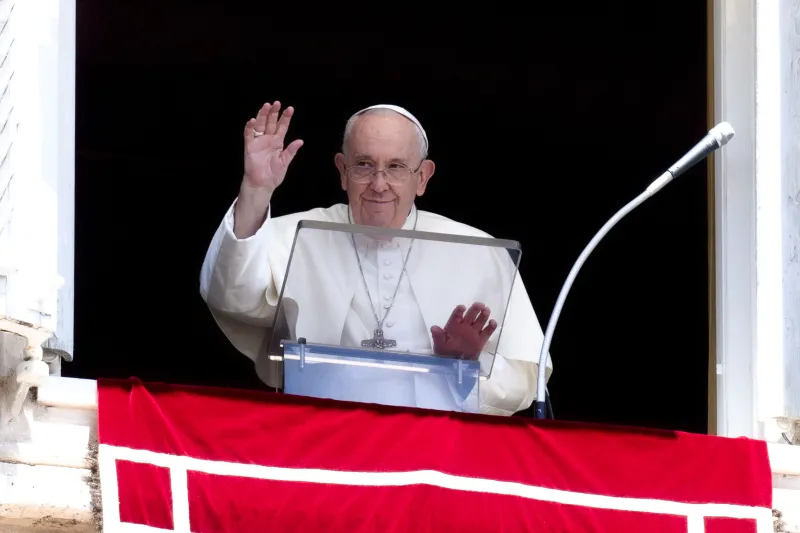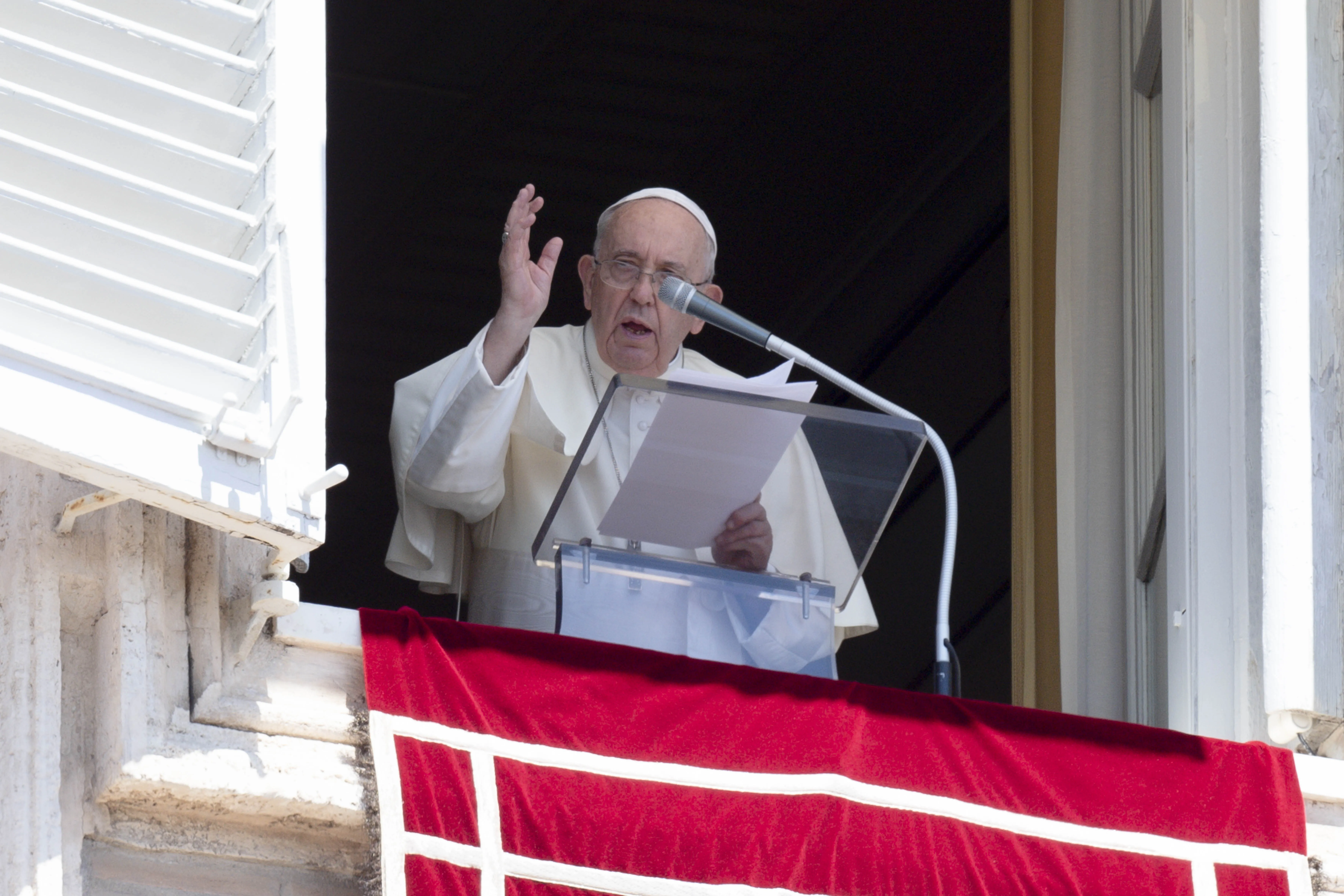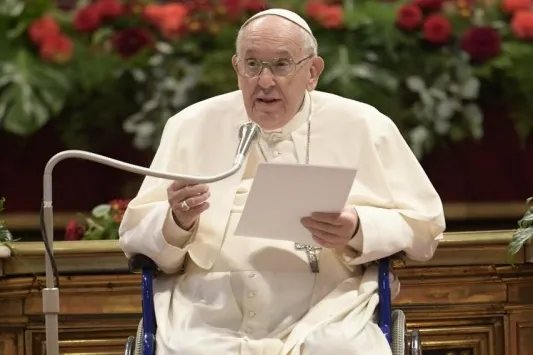
Vatican City, May 17, 2025 / 07:00 am (CNA).
The Mass for the inauguration of Pope Leo XIV’s pontificate will be celebrated on Sunday, May 18, at 10 a.m. Rome time in St. Peter’s Square. The liturgy will mark the official beginning of his ministry as successor of Peter and bishop of Rome. On May 25, he will take canonical possession of St. John Lateran Basilica, the cathedral of the bishop of Rome.
The Mass on May 18 will be celebrated as established in the “Order of Rites of the Beginning of the Petrine Ministry as Bishop of Rome,” a liturgical book approved by Benedict XVI in 2005 and reformed by him in 2013.
“The beginning of the Petrine ministry is what the celebration of the coronation of the pope used to be. Now, popes are no longer crowned with the three-tiered tiara, worn until Paul VI, but rather begin their ministry as the successor of Peter,” Father Juan José Silvestre explained to ACI Prensa, CNA’s Spanish-language news partner. Silvestre is a professor of liturgy in the University of Navarra’s theology department.
In addition, during this ceremony, Leo XIV will receive the pallium and the fisherman’s ring, two elements with profound theological and pastoral significance that mark the start of his pontificate.
The beginning of the pontificate also includes taking canonical possession of the other three papal basilicas, including St. John Lateran Basilica, the cathedral of Rome and thus of the pope.
The taking possession of St. John Lateran Basilica will take place on May 25 and has a distinctive character. “It defines the Holy Father as such, or rather, it is a reminder that he is the bishop of Rome,” Silvestre noted.
“Just as a bishop, once appointed, has a period of two months to take possession of his cathedral, his seat, so the pope, as bishop, will also be received by the cathedral chapter and once seated in his cathedra [bishop’s throne or chair] in St. John Lateran of the Diocese of Rome, he will receive the expression of obedience and respect from a representative group from the Diocese of Rome,” he noted.
Mass for the inauguration of the pontificate
According to the program, the solemn ceremony on May 18 will begin inside St. Peter’s Basilica, before the Altar of Confession. “Pope Leo XIV will go before the tomb of the Apostle Peter to pray there in silence, moments before the solemn Mass for the initiation of his Petrine ministry as bishop of Rome,” Silvestre explained.
The patriarchs of the Eastern Catholic Churches in communion with Rome will also participate in this moment of recollection and prayer. Afterward, the liturgical procession to St. Peter’s Square will begin, led by the pope from inside the basilica to the outdoor altar where Mass will be celebrated.
During the procession, the “Laudes Regiae” (“Royal Praises”), a solemn litany of the saints appropriate for this occasion, is intoned. “It is a particular form of the Litany of the Saints in which the intercession of the saints is sought, grouped in distinct groups, to pray for the holiness of the pope,” the liturgical expert said.
This ancient liturgical chant accompanied Roman imperial victories in the distant past. It was revived by Emperor Charlemagne on Christmas Day in the year 800 during his coronation as emperor and has since become a solemn hymn for monarchical rites.
Also sung for the kings of France and the sovereigns of England until the Reformation, the “Laudes Regiae” evoke a central theological truth: All earthly power comes from God and must be exercised with humility and responsibility.
The pallium and the fisherman’s ring
One of the central moments of the rite is the presentation of the signs of the Petrine ministry, “the two elements that mark the beginning of the pontificate. Previously, the tiara was placed on the pope, but now the important elements are the papal pallium and the fisherman’s ring,” Silvestre related.
Both elements have profound theological and pastoral significance. “The pallium, which is a kind of stole or scarf, is made of sheep’s wool and represents the pope as a shepherd who carries the flock, that is, the Church, on his shoulders,” the liturgy expert explained.
Regarding the fisherman’s ring, the priest said that “it’s a kind of gold ring on which a representation of St. Peter in his boat and the pope’s name are engraved.” This ring also has a practical function because “it is used to seal documents.”
Until this Sunday’s Mass, the pontiff has been wearing his usual episcopal ring. After the rite of presentation of both elements, the College of Cardinals’ act of fidelity to the new pope will take place.
“We will see a representation of the cardinals — on behalf of the entire college — approach the Holy Father to express their reverence, obedience, and ecclesial communion,” Silvestre said.
Proclamation of the Gospel in Greek and Latin
Another of the main features of this Mass marking the inauguration of the pontificate is the proclamation of the Gospel in Greek and Latin, because “the successor of Peter is the pope of the Eastern Catholics and the Latin Catholics.”
After the inaugural Mass at St. Peter’s, Leo XIV will take possession of the other three papal basilicas. On Tuesday, May 20, he will take possession of St. Paul Outside the Walls Basilica. On Sunday, May 25, his second Regina Caeli will be celebrated, and on that same day he will take possession of the basilicas of St. John Lateran and St. Mary Major.
The visit to St. Paul Outside the Walls Basilica on May 20 will focus on the veneration of the tomb of the apostle to the Gentiles: “We will see the pope pray at the tomb of St. Paul.”
Finally, the visit to St. Mary Major Basilica — where Pope Francis used to go and where he is buried — will include Marian devotion. “During his visit to St. Mary Major, Pope Leo XIV will venerate the most famous icon of the city of Rome, the ‘Salus Populi Romani’ [‘Protection of the Roman People’],” Silvestre added.
Universal and diplomatic dimension
In any case, Silvestre emphasized that the Mass for the inauguration of the pontificate will have a clearly universal character because it “emphasizes the Holy Father as the pastor of the universal Church.”
Therefore, in addition to thousands of faithful, heads of state, and diplomatic representatives from various countries will attend. “The Holy See has diplomatic relations with more than 180 countries,” the liturgical expert noted.
This story was first published by ACI Prensa, CNA’s Spanish-language news partner. It has been translated and adapted by CNA.
If you value the news and views Catholic World Report provides, please consider donating to support our efforts. Your contribution will help us continue to make CWR available to all readers worldwide for free, without a subscription. Thank you for your generosity!
Click here for more information on donating to CWR. Click here to sign up for our newsletter.








Leave a Reply